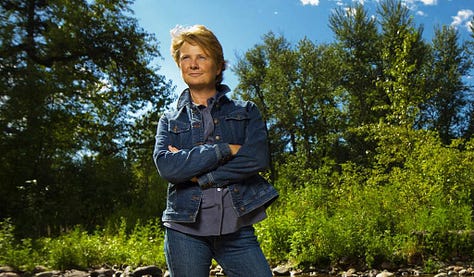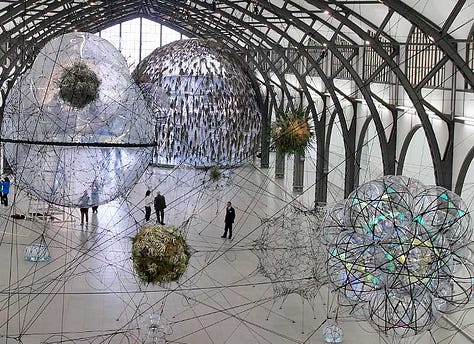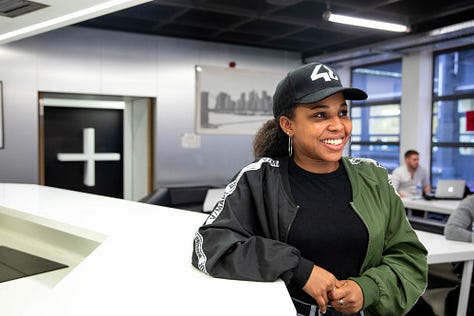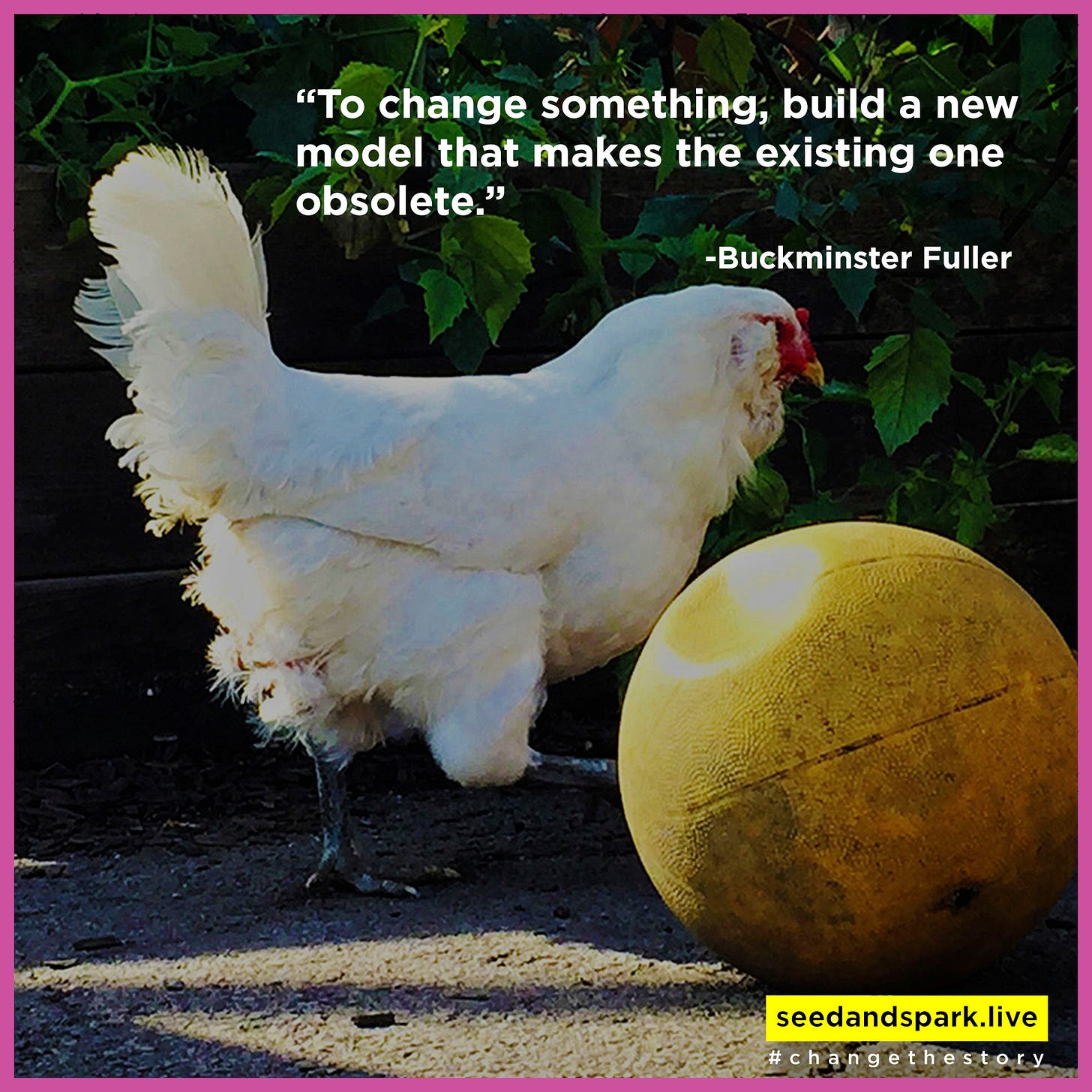New Book Aims to Reshape the Future of Learning (With Your Help)
To launch a thousand Trojan horses . . .
“You never change things by fighting the existing reality. To change something, build a new model that makes the existing model obsolete.”
-- Buckminster Fuller
What circumstances would be required for the existing educational model to be deemed obsolete?
What stands in the way of those circumstances coming to pass?
And if you were to craft a tool that actually helped people create those circumstances, what would you want that sort of resource to be, say, and do?
Last week, in Istanbul, a select group of educators, architects, students and entrepreneurs met to wrestle with those questions, as part of a yearlong collaborative design project.
Today -- via this column -- I’m hoping to solicit your best thinking as well.
To get there from here, imagine a resource filled with these key ingredients:
Essential questions that must be asked and answered in order to properly reimagine the structure and purpose of the things that, up to now, we have always called “school” or “organization”;
People (or non-people) who can help us see old conundrums with fresh eyes, sparking our curiosity about the future of education and its connection to the future of life on Earth;
Stories from around the world to demonstrate, as William Gibson put it, that “the future is already here; it just isn’t evenly distributed;” and
Practical design ideas, both great and small, that can guide anyone’s efforts to intentionally reimagine their schools, communities, and organizations.
THE QUESTIONS
Our team generated more than a hundred key questions to consider -- with an emphasis on questions that were audacious (or even a little absurd), directional (so they can serve as navigational aids), novel (so they can introduce fresh perspectives), and transdisciplinary (so they can exceed the confines of traditional inquiries limited to a single domain).
These three feel particularly meaty -- but which questions would YOU want to insist that we add as well?
What small changes could have the biggest impact and help spark the larger revolution we seek?
Will the future even have occupations -- and if so, what are they most likely to be?
What is most essential to know and embody in the next 25 years?
THE WISDOM WHISPERERS
Who is already piloting novel ways of thinking, governing, learning, working, creating and living that could potentially render our current systems "obsolete?" And which voices must be elevated above the clamor of discord in order to not just embody gender, cultural and geographic diversity, but also ensure a balance of perspectives from both the Global North and South?
Our team got the ball rolling by considering a range of human, animal and physical sources of inspiration. Here are three that felt particularly exciting:
Janine Beynus -- an American biologist, author, and sustainability advocate who coined the term "biomimicry," and who promotes the idea of looking to nature as a source of inspiration for solving human design and engineering challenges;
Tomás Saraceno -- an Argentine artist and architect known for his immersive installations that explore themes of sustainability, social and ecological interconnectedness, and the potential of new technologies; and
Mushrooms -- fungal organisms of all shapes, sizes, and colors that play essential roles in ecosystems as decomposers, disseminators and designers. Below the surface, a network of microscopic fungal threads known as mycelium helps other plants share nutrients and communicate through chemical signals.



Which other sources of wisdom would you want to add to the mix?
THE STORIES
Who are the people, places and communities among us that are already adopting innovative paradigms of learning and living? How can these stories demonstrate how such efforts can be implemented? And in what ways are these stories exhibiting a significant, tangible impact on the revolutionary changes they (and we) seek?
Our team was encouraged by how many worthwhile stories there are, including these three:
Ecole 42 -- a private, nonprofit and tuition-free computer programming school for the next generation of software engineers. Founded in Paris in 2013, the 42 program takes a project-based approach to progress and is designed to develop technical and people skills that match the expectations of the labor market. The school does not have any professors, and is open 24/7. Students learn programming through a peer-to-peer learning method, while pedagogic staff is ever present to support and motivate the students, rather than to teach. “In order to progress at 42,” the school explains, “teamwork is required. You have to rely on the community to learn things that you then share with others. Learn to code. Then break the rules.”
Rural Studio -- an off-campus design-build program rooted in Hale County, Alabama, and part of the School of Architecture at Auburn University. A few dozen students are invited each year to participate in a context-based service-learning curriculum, where students live and work alongside their neighbors, finding solutions together. As Director Andrew Freear put it, “We encourage aspiring young architects to address the ethical responsibility for the social, political, and environmental consequences of what they design and build.”
Oodi -- Helsinki’s newest public library is a beautiful, vibrant, multigenerational civic hub for creativity and connection. Open seven days a week, from early in the morning till late in the evening, Oodi provides its visitors with knowledge, new skills and stories, and easy access for learning, relaxation and work. It is, in other words, the ideal “school” of the future -- a living meeting place of discovery that is open to all.



Which other stories would you have us add, and what do you feel they demonstrate that the rest of us can benefit from understanding?
THE STEPS
Finally, in order to get better at building new models that can make the existing structures obsolete, what steps should we take, what sort of sequence should we follow, and how should we ascertain whether our efforts are gaining momentum?
In Istanbul, our team discussed generating a list of suggestions that were as useful as the 79 design ideas in The Third Teacher.
In particular, these three seem vital:
NAME THE OUTCOMES – What, as a community, do you most want one another to know (competencies), do (skills), be (habits of mind and heart), and experience (actively engage in) in order to learn deeply and become intentional authors of our own lives?
STEP OUTSIDE YOUR CULTURE – Find a day when you can be a silent observer in someone else’s workspace. What patterns do you notice about the ways people work, move, interact, or collaborate? How are these patterns similar or different from your own? In what ways are they preferable or not preferable? And what implications do your observations have for your own culture going forward?
SEED YOUR OWN DEMISE -- Identify a low-stakes, low-risk prototype you can launch in your organization that, if it worked, would eventually render your current way(s) of learning and living obsolete -- and, if it failed, would fail harmlessly in the corner of your current culture? What would be the bare minimum required to start testing the core of your idea, and see if it’s not only viable, but contagious?
What other suggestions, strategies and steps would YOU add, so that together we can build a bread-crumb trail to the future, one in which we become much more active -- and effective -- at sowing the seeds of our own eventual creative destruction and renewal?
The clock is ticking -- for all of us.
But with your help, this resource will be ready for sharing with the world by mid-May, 2024.
Tell us what you think -- and together, we can #changethestory . . .







I enjoyed Seed and Spark, so I'm quite excited for the new book! As an educator, some of the questions and ideas you shared in the newsletter already resonate with me... and I really like that that others challenged me to rethink things and go deeper.
You posed questions for your readers as well, so I'll respond with some things jogged/inspired by what you shared.
More Questions:
How do we develop an education system that prepares students for a future that we, as the current adult generation, can’t fully imagine or predict? How can we create educational systems that are resilient and adaptable enough to thrive amidst rapid technological and societal change? Beyond preparing students for the future and their future lives, how can education foster a deep sense of purpose and personal fulfillment?
Other Wisdom Whisperer Ideas:
Ants and EO Wilson: An ant colony's division of labor mirrors human system roles, and their capacity to adapt and learn from environmental changes reflects our societal adaptations. Like our systems, they rely on communication and feedback mechanisms for effective function. Ants, despite their tiny size, are capable of performing complex tasks, from intricate nest construction to efficient food gathering, not through individual prowess, but through collective effort. Each ant doesn't possess an overview of the entire task at hand, yet the colony thrives. EO Wilson transformed our understanding of how human and animal societies evolve. His work includes sociobiology applied to human ethics and the evolutionary origins of human thought… and so much more.
Tavares Strachan, a wise explorer-scientist-artist-visionary: “Talking to him, one begins to believe that anyone who doesn’t attempt the impossible suffers from a lack of imagination.” (NYT article, 2020) He’s been referred to as an artist who doesn’t behave as an artist should. One of my favorite pieces of his happens to be one of his first installations, “The Distance Between What We Have and What We Want”. A lot of his work ties into aspects of education.
Reginald Dwayne Betts: His story is inspirational– from prisoner to avid reader to activist to poet and performer to teacher and Yale Law School student. Wow. His current work, Freedom Reads, is an organization that brings a Freedom Library to prisons-- demonstrates the transformative power of books. The bookshelf that houses each library creates a thoughtful educational space by its design. I’ll use a quote from his website to posit that books are a critical part of the solutions to the essential questions your group is tackling: “Books become essential when you want to imagine a new life for yourself.”
More on The Steps:
Like another commenter, I too like the step called "Seed your own Demise." When it comes to learning and strategizing about AI in education, it definitely feels like I’m seeding my own demise at times, pursuing a technology that may render my ways of teaching obsolete. The potential for generative AI to address Benjamin Bloom’s Two Sigma Problem by offering 24/7 tutoring capabilities is promising enough that I have stepped outside of my comfort zone as a listener/thinker to being a leader and vocal risk taker on this topic at my school. Sometimes my pursuit has complicated my relationships with colleagues. For example, I started an opt-in teacher learning/listening/sharing community this past spring. We met every few weeks and generated (mostly by humans) more questions than answers in these sessions, and that’s not a bad thing as questions deepen thinking, connect us more, and can inspire people to act. My efforts in that area have been met with a range of negative responses based in fear and insecurity to positivity based on inclusion and collaboration. It has been quite uncomfortable at times to put myself out there like this, but I’m committed to staying the course. And possibly seeding my own demise.
Your writing and projects make me more optimistic about the future of education. Thank you.
Thank you for this encouragement, I feel like it's so important to find the kindred spirits in this crucial work! I am tilling the same field in my Substack blog, "The Spirit of Education." Latest post here: https://open.substack.com/pub/jenniferbrowdyphd/p/calling-on-human-imagination?r=77vfa&utm_campaign=post&utm_medium=web